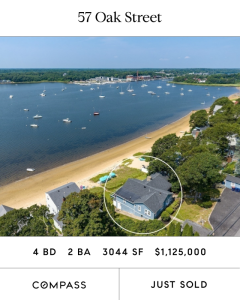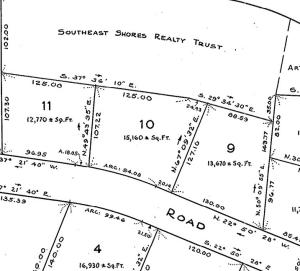Absentee rate at Wareham schools skyrockets due to pandemic
The percentage of “chronically absent” students in the Wareham School District has sharply increased since 2019, according to a report given by Assistant Superintendent Dr. Andrea Schwamb at Thursday, Oct. 20’s meeting of the Wareham School Committee.
Schwamb and the School Committee attributed her report’s findings to “learning loss” caused by the Covid-19 pandemic.
The percentage of “chronically absent” students, who missed more than ten percent of the school year, shot up from 16.3 percent in 2019 to 35 percent in 2022. “Chronically absent” students were far more likely to score poorly on this year’s MCAS.
“In order to learn, kids need to be in school,” Schwamb said. “It makes a big difference in the outcomes.”
Schwamb’s report also found that Wareham students’ MCAS scores were almost universally poorer than the state average, which was also blamed on the effects of Covid.
“Wareham is no exception to that trend,” said School Committee Chair Kevin Brogioli.
In math, the percentage of Wareham students who scored E (Exceeding Expectations) or M (Meeting Expectations) consistently trailed the statewide percentage of students who got those scores. In English, only seventh graders were more likely to score E or M than students statewide. Low-income students, which make up 67.3 percent of the Wareham School District, were also more likely to score poorly. This is much higher than the state average of 43.8 percent.
There were some positive findings in the report, however. Fourth and fifth graders scored higher in math than they did before the pandemic. Wareham Middle School students saw scores improve across the board.
“We did see a lot of high growth,” Schwamb said, “particularly at the middle school, with math.”
To find her data, Schwamb went back to 2017, when the first Next-Generation MCAS exams were taken.
She could follow the test scores through time - those who were third graders in 2017 are now eighth graders in 2022.
Using this information, student growth percentile (SGP) can be calculated.
The typical SGP is 50 or higher, meaning that half of demographically similar school districts performed better and half performed worse.
From fourth grade in 2018 to fifth grade in 2019, Wareham students’ SGP increased from 51.3 to 54 in the English portion, but decreased from 64.8 to 48.3 in math. From fifth grade before the pandemic to eighth grade after it, students’ SGP in English and math plummeted to 36 and 29, respectively.
Tracking the SGP of students who were seventh graders in 2019 and tenth graders in 2022 shows a similar decline.
Superintendent Dr. Matthew D’Andrea said that, on average, Wareham’s SGP puts the district “in the middle of the pack.”
“We did relatively the same as other districts like us,” he said. “Whether that’s better or that’s worse, that’s what it is.”
“In layman’s terms,” Schwamb said, “it means our students are learning and the teachers are teaching. They may not be where we’d like in terms of achievement, but they are learning, and they are not stagnating.”






























